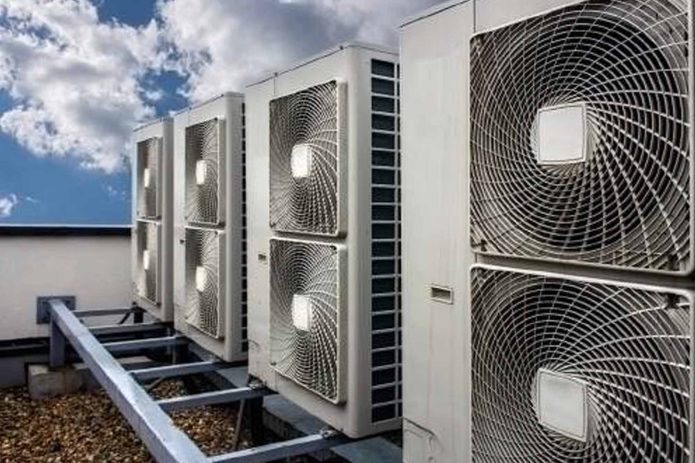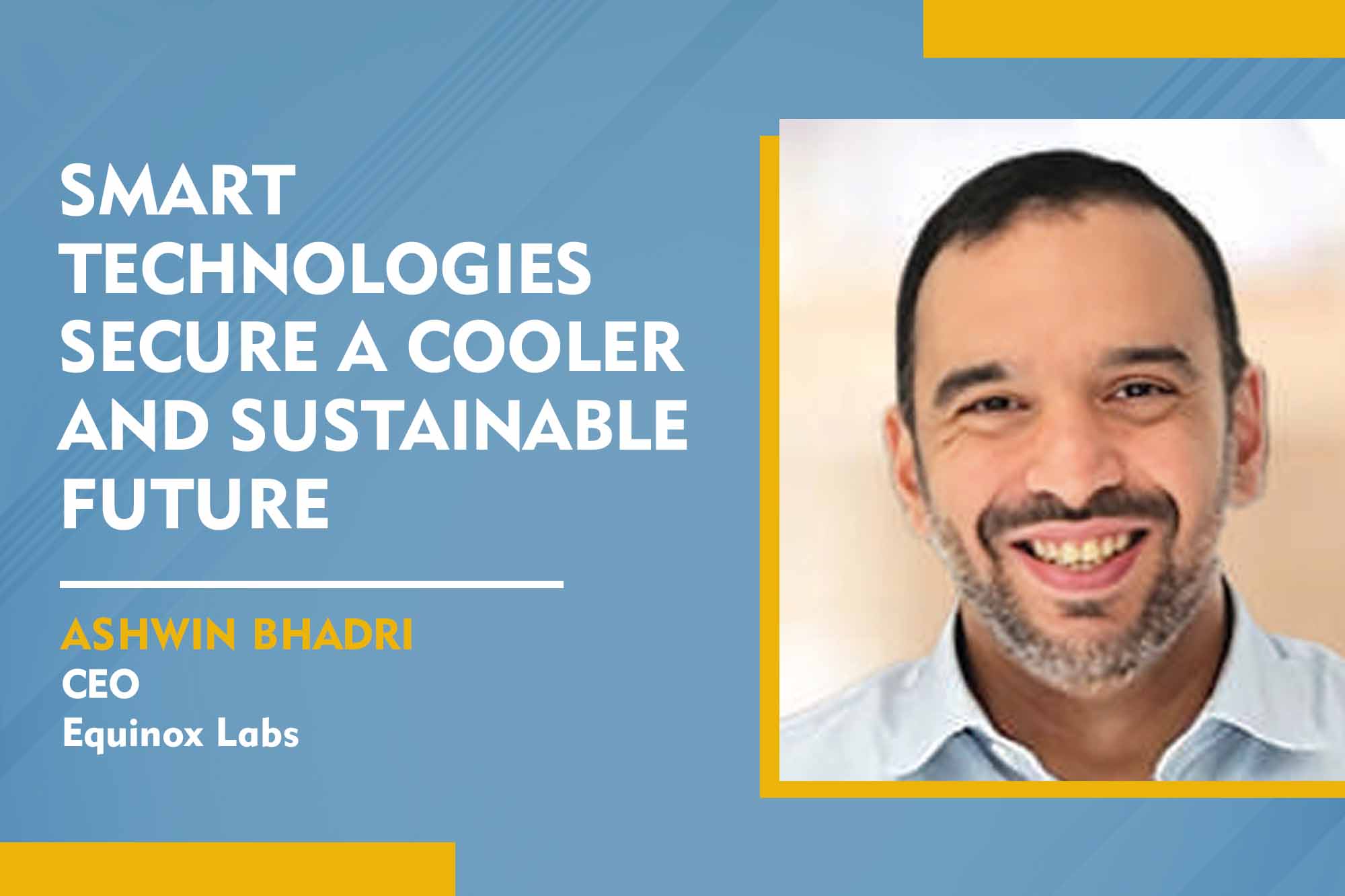Ashwin Bhadri, CEO of Equinox Labs, discusses smart technologies such as variable-speed compressors, condensing units, smart thermostats, etc., in the HVACR industry that are driving energy efficiency, sustainability and improving indoor air quality—thus promising a cooler, healthier future for buildings nationwide.
How are variable-speed compressors influencing the energy efficiency and performance of the HVACR industry?
India’s HVACR industry is witnessing a surge in energy efficiency due to variable-speed compressors. These intelligent compressors adjust speed based on real-time needs, slashing energy use by up to 40 per cent compared to traditional models. They also improve comfort, boost heat pump efficiency, and allow eco-friendly refrigerants. In a way, variable speed is a game-changer for India’s HVACR sector.
How are new HVAC&R technologies addressing the climate challenge in India?
India’s climate demands innovative cooling solutions, and HVAC&R technologies face this challenge. Variable speed compressors adjust cooling to real-time needs, cutting down energy consumption. Desiccant dehumidification directly tackles moisture, reducing dependence on energy-intensive cooling methods. Solar-powered AC systems harness sunlight to diminish grid reliance and environmental impact. Smart tech integration, such as IoT, optimises equipment operation by leveraging real-time data.
Natural Refrigerants, like CO2, offer eco-friendly alternatives, minimising environmental harm. These advancements and good building insulation are building a more sustainable future for India’s HVAC industry.
What types of measuring instruments are crucial for maintenance and streamlined monitoring?
Maintaining optimal conditions in Indian HVAC systems relies heavily on precise measuring instruments. Temperature and Humidity sensors monitor air and refrigerant temperature and moisture levels, ensuring efficient cooling and comfort. Airflow meters and pressure gauges gauge airflow and refrigerant pressure, detecting issues like leaks or blockages. Data Loggers and multifunction meters record data and offer multiple measurement functions, facilitating proactive maintenance and streamlined monitoring. These instruments empower technicians to diagnose issues effectively, optimise performance, and maintain incessant comfort with minimal energy consumption.
How do manufacturers ensure predictive maintenance enabled by advanced sensors and data analytics in HVACR systems?
India’s leading HVAC manufacturers use advanced sensors and data analytics for predictive maintenance. Sensors embedded in systems collect data on temperature, vibration, and energy use. Machine learning analyses this data to predict potential equipment failures before they occur. This allows for proactive maintenance, reducing downtime, extending equipment life, and optimising performance. Predictive maintenance is a leap forward for India’s HVACR industry, ensuring smooth operation and a more sustainable future.

How do smart thermostats and building automation systems enhance the efficiency and monitoring of HVACR systems?
India’s relentless heat demands necessitate more intelligent HVAC solutions. Smart thermostats and building automation systems have emerged as game-changers. Smart thermostats adapt to occupancy patterns, optimise cooling efficiency, and offer remote control for easy management. Automation systems streamline control across buildings, providing real-time data for enhanced operation and remote monitoring.
These technologies yield significant advantages. Firstly, they reduce energy consumption by eliminating unnecessary cooling and optimising building-wide operation. They enhance sustainability by minimising the environmental impact of HVAC use and improve occupant comfort by maintaining consistent cooling without sacrificing efficiency. Smart technology is revolutionising India’s HVAC landscape for a cooler and more sustainable future.
How are condensing units and transitioning to low GWP refrigerants shaping industry growth?
India’s HVAC&R industry is undergoing a significant transformation driven by two key trends. Firstly, more sophisticated models equipped with advanced features are replacing traditional condensing units. These include Variable Speed Drives (VSD) and inverter technology, which optimise compressor operation for energy efficiency and precise comfort control. Two-stage cooling systems are also becoming prevalent, offering efficient cooling for varying temperature conditions.
Secondly, there is a concerted effort towards adopting low Global Warming Potential (GWP) refrigerants to enhance environmental sustainability. High-GWP refrigerants like R22 are being phased out in favour of eco-friendly options such as R32 and R290 (Propane). These refrigerants offer improved efficiency while minimising environmental impact.
These advancements in condensing units and the transition to low-GWP refrigerants are driving India’s HVAC&R sector towards a more sustainable and energy-efficient future.
What are the types of air purification technologies that can improve IAQ?
India’s rising focus on healthy buildings necessitates improved Indoor Air Quality. HVAC&R systems are evolving to include various air purification technologies.
These include mechanical filtration, which effectively captures dust, pollen, and other airborne particles, including microscopic pollutants, with high-efficiency options like HEPA filters. Electrostatic air filters use an electric charge to attract and trap airborne particles, including dust, allergens, and some bacteria and viruses. Activated carbon filtration utilises a porous carbon material to absorb gaseous pollutants like volatile organic compounds (VOCs) and odours commonly found indoors. Furthermore, Ultraviolet Germicidal Irradiation (UVGI) employs ultraviolet light to neutralise airborne microorganisms like bacteria and viruses as they pass through the HVAC system. Photocatalytic Oxidation (PCO) combines UV light with a catalyst to break down pollutants like VOCs and odours into harmless compounds.
By integrating these air purification technologies, HVAC&R systems contribute to significantly improved IAQ in buildings throughout India, fostering a healthier and more comfortable environment for occupants.
Cookie Consent
We use cookies to personalize your experience. By continuing to visit this website you agree to our Terms & Conditions, Privacy Policy and Cookie Policy.















